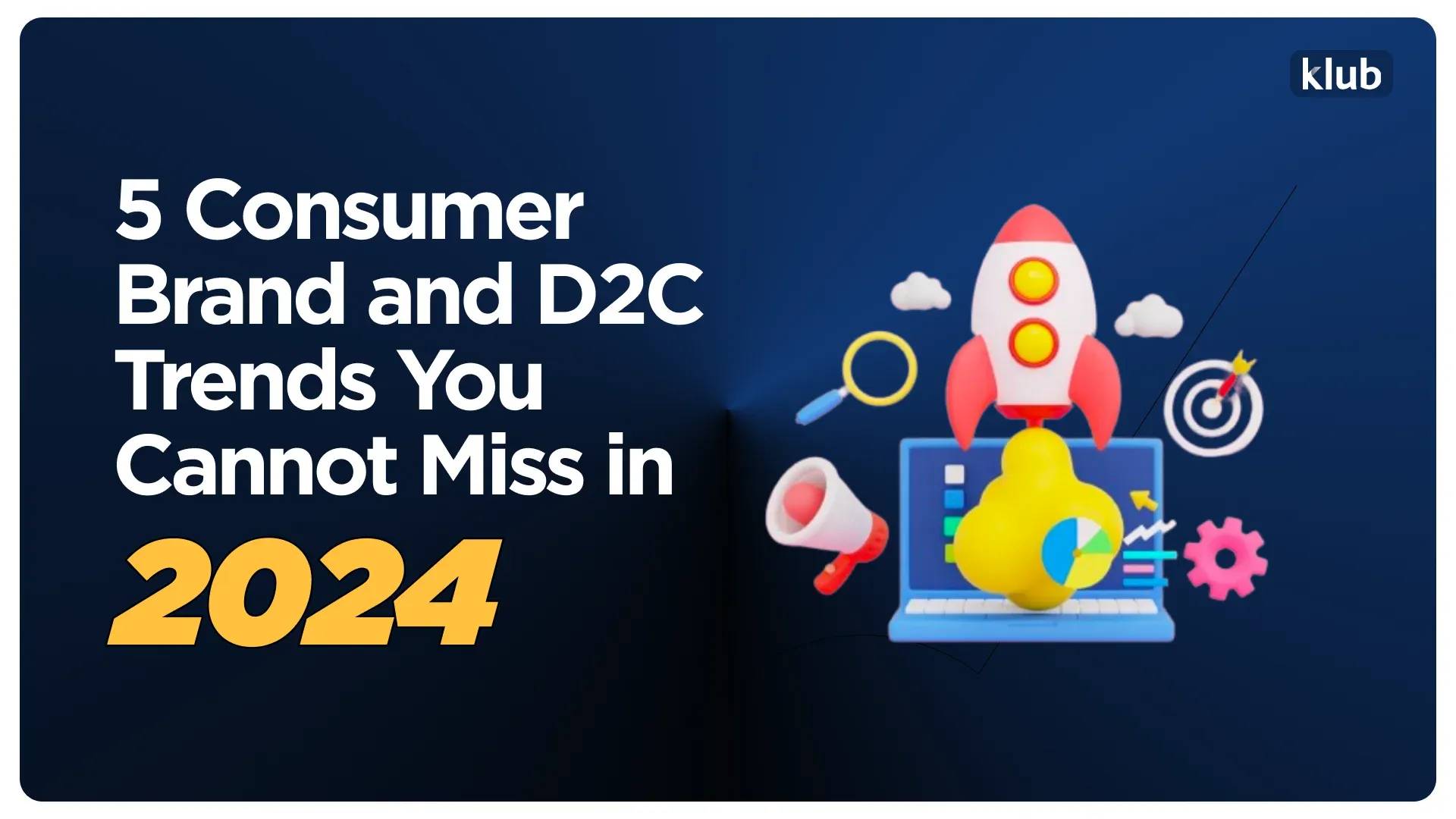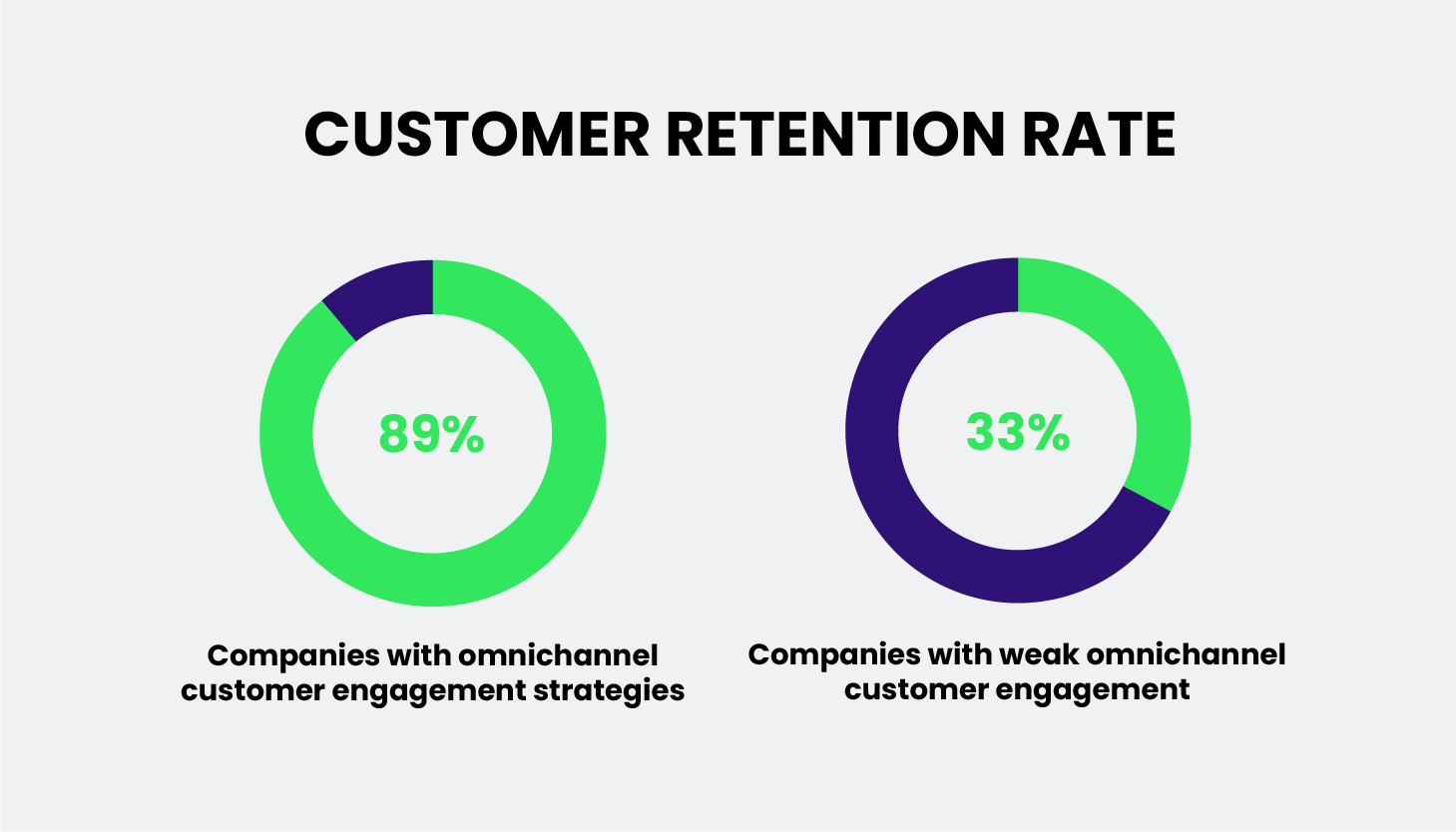
5 Consumer Brand and D2C Trends You Cannot Miss in 2024
Wed Jan 24 2024
5 min read
5 Consumer Brand and D2C Trends You Cannot Miss in 2024
In a market saturated with numerous consumer brands, the competition is intense.
Standing out is a formidable challenge, given the multitude of options available to customers.
To navigate this landscape, getting the basics right, persistently refining your product, customer acquisition and marketing strategy, and incorporating valuable customer feedback is imperative.
In 2024, Klub has listed five emerging trends that demand your attention, especially for those looking to grow their consumer brand or D2C company.
1. Funding trends (Non-dilutive funding is becoming a popular option)
The popularity of non-dilutive funding options is rising and is expected to continue gaining momentum in 2024.
As per Allied Market Research, Revenue Based Financing is growing the fastest among the three most popular non-dilutive funding options (grants, loans, and Revenue Based Financing), with an expected CAGR of 61% from 2020 to 2027.
Asia-Pacific would exhibit the highest CAGR of 65.0% during 2020-2027.
This is a result of
- the multitude of funding choices available,
- the increasing knowledge among entrepreneurs regarding various funding methods,
- the costly and risky nature of equity financing in a highly competitive startup market,
- as well as the founders' preference to maintain full ownership and autonomy over their ventures.

Image credits: www.alliedmarketresearch.com/revenue-based-financing-market-A07537
However, consumer brands must consider the following parameters carefully when exploring different non-dilutive funding sources.
- Eligibility requirements,
- Repayment terms,
- Interest rates, and
- Potential impact on cash flow.
2. UGC marketing trends
According to a survey by Rakuten Insight on user-generated content (UGC) in India, product videos were the most engaged with user-generated content among 62% of consumers, followed by images of products in 2023.

Image credits: www.statista.com/statistics/1419439/india-engagement-with-ugc-by-type/
According to the Semrush Social Media 2024 Trends report, consumers will engage more with User-Generated Content (UGC) than polished, professional content.
As we look ahead to 2024, there are a few UGC (User Generated Content) marketing trends that we can expect to see dominating the scene.
These trends include video UGC, influencer collaboration, and AR integration.
- By leveraging video UGC, brands can effectively showcase their customers' real stories and emotions.
- Collaborating with influencers can expand their reach and increase their credibility.
- AR integration is also a key trend that can enhance the customer experience by allowing them to try on products, personalise their preferences, and access more information.
However, it is crucial for brands to carefully curate their UGC, ensuring it is relatable, genuine, and regulated while simultaneously respecting the rights and privacy of the content creators.
3. D2C brands going Omnichannel
In 2024, the rise of omnichannel strategies among D2C brands will be on the horizon, promising many advantages.
Several brands, including the popular activewear brand Blissclub, broke the norm after two years as a D2C company and launched a physical store in Bengaluru in January 2023. Other brands also expanded their offline presence and adopted omnichannel retailing.
D2C sexual wellness brand MyMuse India raised Pre-Series A funding of $2.7 Mn (approximately INR 22.4 Cr) and plans to use the fresh proceeds to finance inventory, strengthen its omnichannel presence and scale its distribution operations across India.
Sakksham Ghanani, the founder of the apparel and fashion brand Colour Capital, emphasised the need for a balanced approach, stating, “To save on marketplace commissions, you need to have your own D2C website, but you would also not get the best return on your investments there. We plan to stay on Multi-brand Outlets (MBO) and, eventually, open our single-brand outlets. Neither (Online and Physical Stores) can be independently held. There should be a mix of everything for maximum reach and distribution.”
D2C brands are recognising the advantages of omnichannel, which include access to valuable customer data, direct relationships, competitive pricing, innovative products, seamless commerce across channels, strong brand recognition, and control over operations.
However, they must navigate challenges such as channel complexity, profitability, maintaining quality, addressing customer expectations, and ensuring sustainability when adopting the omnichannel presence.
Nonetheless, D2C brands must invest in technology, infrastructure, and analytics to support their omnichannel approach.
4. Focus on sustainability while finding the PMF and brand-building In India, consumer brands are embracing the concept of sustainability at a rapid pace and will continue to do so in the year 2024 as well.
According to data, 55% of consumers still enjoy going to physical stores to touch and see products. Even if they buy online, their in-store experiences often affect their decisions.

Image credits: https://www.digizuite.com/blog/omnichannel-statistics
This is due to the growing number of customers who are conscious of their purchasing decisions and willing to pay for products that positively impact the environment and society.
However, despite this increasing demand, certain challenges and gaps hinder consumers' full adoption of sustainable products.
These obstacles include limited access to information, lack of trust, concerns over product quality, inconvenience, and affordability.
To truly cater to the expectations and needs of their consumers, brands must address these barriers.
This can be achieved by
- providing transparent and reliable information,
- actively educating and engaging consumers,
- constantly innovating and setting their products apart, and
- aligning their brand purpose and values with their consumers' sustainability goals and aspirations.
It is also essential for these brands to not only make sustainability claims but also support them with verifiable evidence and adhere to credible standards.
5. AI, Chatbots and Machine Learning AI, chatbots and machine learning will significantly impact consumer brands in India in 2024.
- Chatbots will become more ubiquitous and sophisticated, using natural language processing, machine learning, and sentiment analysis to provide personalised and engaging customer service, sales, and marketing.
- Startups will invest more in developing and implementing ethical AI models, as they can gain a competitive edge, enhance customer trust, and comply with emerging regulations.
- Indian language AI models and LLMs will receive more attention and funding as they can cater to the diverse and growing linguistic needs of the Indian population, enable greater access and inclusion, and foster innovation and creativity.
- Marketing tech will leverage the power and potential of GenAI, as it can enhance customer engagement, satisfaction, and loyalty, improve marketing efficiency and effectiveness, and generate new insights and opportunities.
- Indian startups will hire more talent for generative AI, as they can tap into the growing demand and supply of generative AI solutions, products, and services and create value and impact for various domains and sectors.
- The next generation of generative AI could enable more realistic, creative, and personalised content generation, as well as new applications and use cases.
- Augmented working could also create new opportunities and challenges for the future of work.
However, brands must be aware of the ethical, legal, and social considerations surrounding these technologies. This includes prioritising transparency, fairness, and security in their implementation.
In 2024, success for consumer brands lies in recognising and integrating multiple trends. From funding strategies to sustainability and AI adoption, each trend is interconnected. It's not about following one trend but orchestrating a harmonious blend to shape the future of consumer brands.
Read article on StartupNews.fyi








